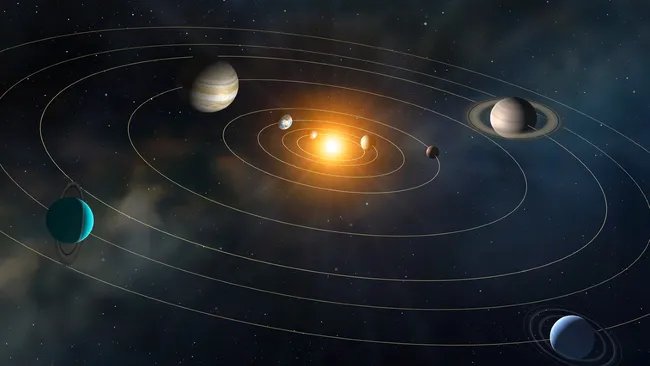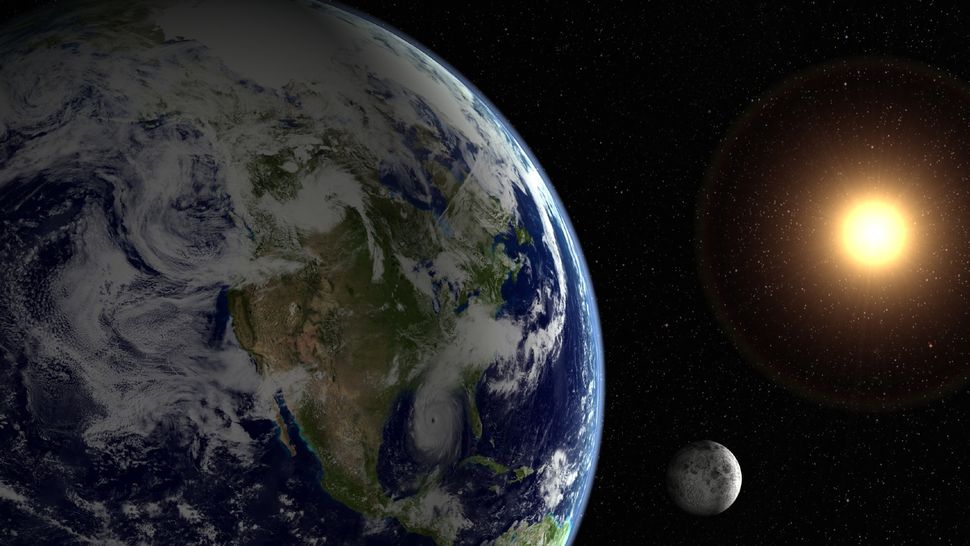How many revolutions has Earth completed around the sun?
When standing on the Earth’s surface, it’s simple to overlook the fact that our planet is rapidly orbiting the sun at speeds exceeding 67,000 mph (107,800 km/h). It’s even more easily overlooked that seven other planets are also navigating around our home star at comparable, breakneck velocities, and all eight have been continuously encircling the solar system for billions of years.

What could be truly mind-boggling is discovering the number of revolutions around the sun each planet has completed. Although this might seem like a complex calculation, the relatively unchanged orbits of the planets throughout most of their existence make it a matter of straightforward arithmetic.
Approximately 4.6 billion years ago, the solar system originated as the sun emerged from a dust cloud remnants of previous stellar explosions. The birth of the giant planets—Jupiter, Saturn, Uranus, and Neptune—occurred around 4.59 billion years ago. Subsequently, around 4.5 billion years ago, the formation of the smaller, rocky planets—Mercury, Venus, Earth, and Mars—took place, as reported by The Planetary Society.
Nevertheless, during the initial stages of planetary formation, the orbits of the planets around the sun differed from their present configurations, particularly in the case of the giant planets. Approximately 100 million years after the initial planet formation, a period of “dynamical instability” ensued. This instability led to a gravitational struggle among the massive celestial bodies, resulting in the expulsion of outer solar system planetary material and even some emerging protoplanets from the solar system, as explained by Sean Raymond, an astronomer at the Bordeaux Astrophysics Laboratory in France and an expert on planetary systems, in correspondence with Live Science.
Once the planets had emerged and completed their positional adjustments through interactions, they eventually settled into consistent and stable orbits. These orbits have remained largely unchanged for about 98% to 99% of the solar system’s existence, according to Raymond. Consequently, the current orbital dynamics of the planets provide a reliable basis for estimating the number of revolutions they have completed around the sun.
For instance, Earth, taking a year to orbit the sun, has been in existence for approximately 4.5 billion years, suggesting it has completed roughly 4.5 billion orbits around the solar system. However, the total number of orbits varies significantly among other planets due to the differing lengths of their years compared to Earth’s.

Mercury, the innermost planet in our solar system, completes a single orbit around the sun in a mere 88 days (or approximately 0.24 years, considering a year with 365.25 days). Over the course of the past 4.5 billion years, Mercury has accomplished approximately 18.7 billion solar orbits. In contrast, Neptune, situated as the outermost planet, takes approximately 60,190 days (equivalent to 164.7 years) to complete one orbit. Consequently, during its 4.59 billion years of existence, Neptune has completed approximately 27.9 million trips around the sun. This stark contrast reveals that Mercury has circled the sun around 18.7 billion times more than Neptune.
Below is a comprehensive list of the planets, along with their orbital periods and the total number of orbits around the sun they have completed:

Indeed, while the current numbers of solar orbits for the planets are already remarkable, many of them have the potential to approximately double their count during the remainder of their lifetimes. Over the next 4.5 billion years, the sun is expected to expand, reaching Earth’s orbit and transforming into a red dwarf star. This transformation will result in the destruction of Mercury, Venus, and Earth. Although the fate of the other planets may involve surviving the expansion without being consumed, their orbits are anticipated to undergo significant alterations. As a result, the future holds dynamic changes for the remaining planets in our solar system.
This article is republished from SpaceCom under a Creative Commons license. Read the original article.
Do not forget to share your opinion with us to provide you with the best posts !



0 Comments